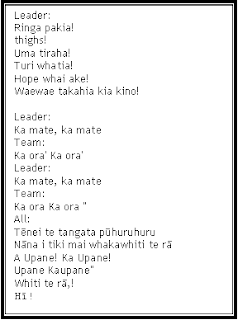 In New Zealand the practice of sports its very common, specially rugby. Rugby in New Zealand is different than other countries because here it is a religion; it’s a culture, as people play rugby constantly and from an early age. This sport isn’t only cheered by men, but also cheered by girls and boys of different ages. Before every match they do the Haka a Maori challenge dance, the All Black specifically use the “Ka mate” Haka to challenge there opponent, this is the All Blacks “Ka mate” Haka
In New Zealand the practice of sports its very common, specially rugby. Rugby in New Zealand is different than other countries because here it is a religion; it’s a culture, as people play rugby constantly and from an early age. This sport isn’t only cheered by men, but also cheered by girls and boys of different ages. Before every match they do the Haka a Maori challenge dance, the All Black specifically use the “Ka mate” Haka to challenge there opponent, this is the All Blacks “Ka mate” Haka"Ka Mate"
In this time in New Zealand we have had the opportunity to live and feel the atmosphere for Rugby World Cup as in every store they sell things of the world cup, and the people are getting ready for it.
By Matthew Faille.













